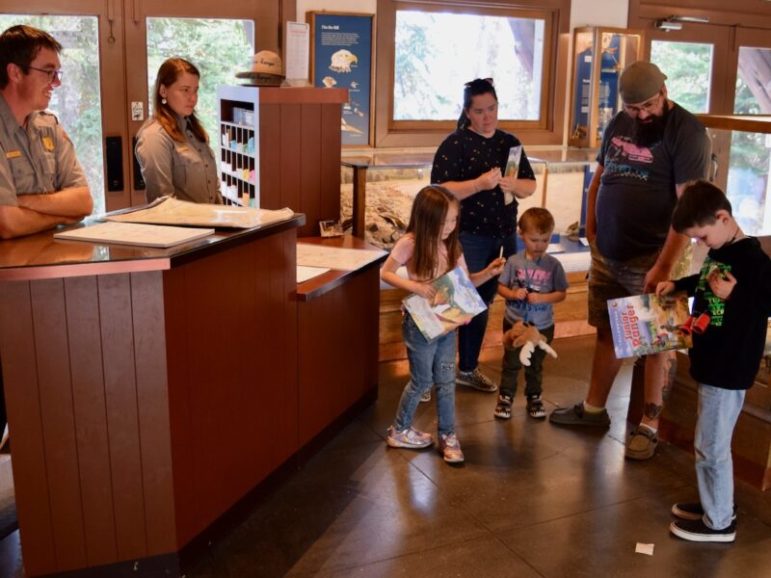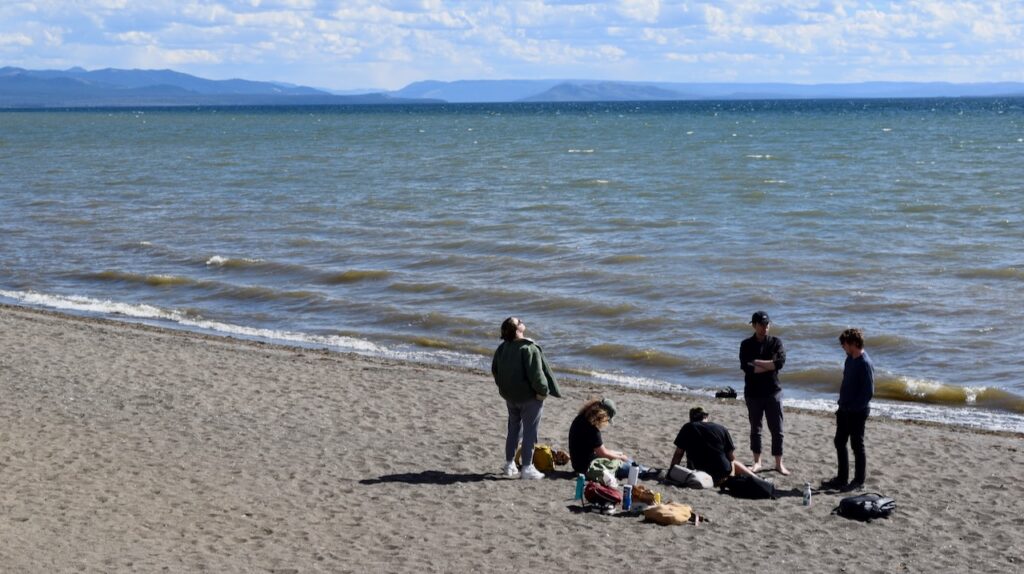
LAKE VILLAGE, Wyo. — A historic roadside stop in Yellowstone National Park reopened this year to little fanfare after an extended closure for renovations. But longtime fans of the Fishing Bridge Visitor Center who might be worried about drastic changes can rest assured that it’s still for the birds.
“I hate to say it was known for a bunch of birds, but that’s what most people remember about it,” said Janis Buckerus, supervisory ranger for Yellowstone’s Lake District, describing the extensive avian taxidermy on display for nearly a century at Fishing Bridge.
What was then known as the Fishing Bridge Visitor Center and Trailside Museum opened in 1931, containing several display cases with a total of 170 birds. Many were posed and preserved by Carl Russell, a longtime National Park Service employee who served as chief naturalist and later as superintendent of Yosemite National Park.

During renovations, the birds were sent away for cleaning and restoration, and the Center now hosts 112 of them in new displays that offer greatly improved interpretive context. The remaining specimens are archived at a park facility in Gardiner, Montana.
“It was always a beloved visitor area to begin with, because I think a lot of people do like the birds,” Buckerus said. “But now that they’re more in their ecological context, I think that’s probably the biggest benefit to visiting there.”
The Center closed in 2019 for planned renovations, part of an approximately $500,000 project covered by federal funds and a matching grant from Yellowstone Forever, the park’s nonprofit partner, Buckerus said.
After park-wide disruptions brought by the COVID-19 pandemic and last year’s June floods, it reopened this spring, but with little notice or publicity.
Off the beaten path
Approximately 14,000 people each week stopped by the Center this summer, Buckerus said. “A lot of the visitors have been very complimentary, and the staff have enjoyed it. They practically give tours of the museum now.”
The facility sees fewer visitors than some others like it in Yellowstone because it is “a bit off the beaten path,” Buckerus said. The Center is set back from the road and is less visible to passing traffic, and restrooms are at a separate location nearby.

Fishing Bridge was one of four “roadside museums” built in the early 1930s based on a 1928 proposal by then-Superintendent Horace Albright, said Linda Veress, a park spokeswoman.
Albright saw the museums as a way for visitors to “make their sojourn educationally as well as recreationally profitable,” and additional ones built at Madison Junction and Norris Geyser Basin remain. One built at Old Faithful was torn down and replaced in 1972. That structure was also razed decades later, and is now the site of the current Old Faithful Visitor Education Center.
The remaining three roadside museums were designated National Historic Landmarks in 1982, Veress said, “because their exaggerated features and organic forms exemplify rustic design in the national parks, and served as models for hundreds of park buildings constructed during work relief programs of the 1930s.”
“As envisioned by the chairman of the American Association of Museums, Hermon Bumpus, they also established the idea of ‘trailside museums’ where visitors could learn about an area within a park,” she said. “Bumpus regarded national parks as ‘roofless museums of nature,’ the park itself being an unlabeled exhibit and the trailside museum as the place to provide the labels.”
Bird identification
At Fishing Bridge, the bird displays were originally meant to help visitors identify species they were likely to see in the area. And while they still are, they now also show each bird’s role in the Yellowstone ecosystem in greater detail. The Center also includes a room-sized, three-dimensional topographic map of the Lake District, as well as interpretive displays about the detrimental effects of invasive lake trout on native Yellowstone cutthroat trout.
Other improvements made during the renovation include removing an added interior wall that had covered windows that once again provide views of Yellowstone Lake, upgrading the information desk and improving accessibility for those with mobility issues, Buckerus said.

The Center also offers the latest information about forest regrowth since the historic 1988 fires that covered one-third of Yellowstone, as well as fire’s role in the ecosystem. And it includes displays highlighting what lies beneath Yellowstone Lake, which is North America’s largest alpine lake, reaching depths of nearly 400 feet.
Half of the lake lies within the caldera of the Yellowstone Supervolcano, and recent scientific research has revealed “a vast field of active hydrothermal features” under its surface, Veress said.
Another display offers details on the presence of Native peoples in what is now the Lake District stretching back over 11,000 years, Buckerus said.
Burke Masles, a software engineer from Grass Valley, California, stopped by Fishing Bridge on a visit to Yellowstone earlier this month.
“The whole area is incredibly beautiful,” said Masles, a first-time Yellowstone visitor who spent part of his afternoon at Fishing Bridge to learn more about the area’s history and ecology.
“It’s really put together well, and the displays are informative and look really good,” he said. “I’m glad I came in.”
Republished with permission from Wyoming Truth.
